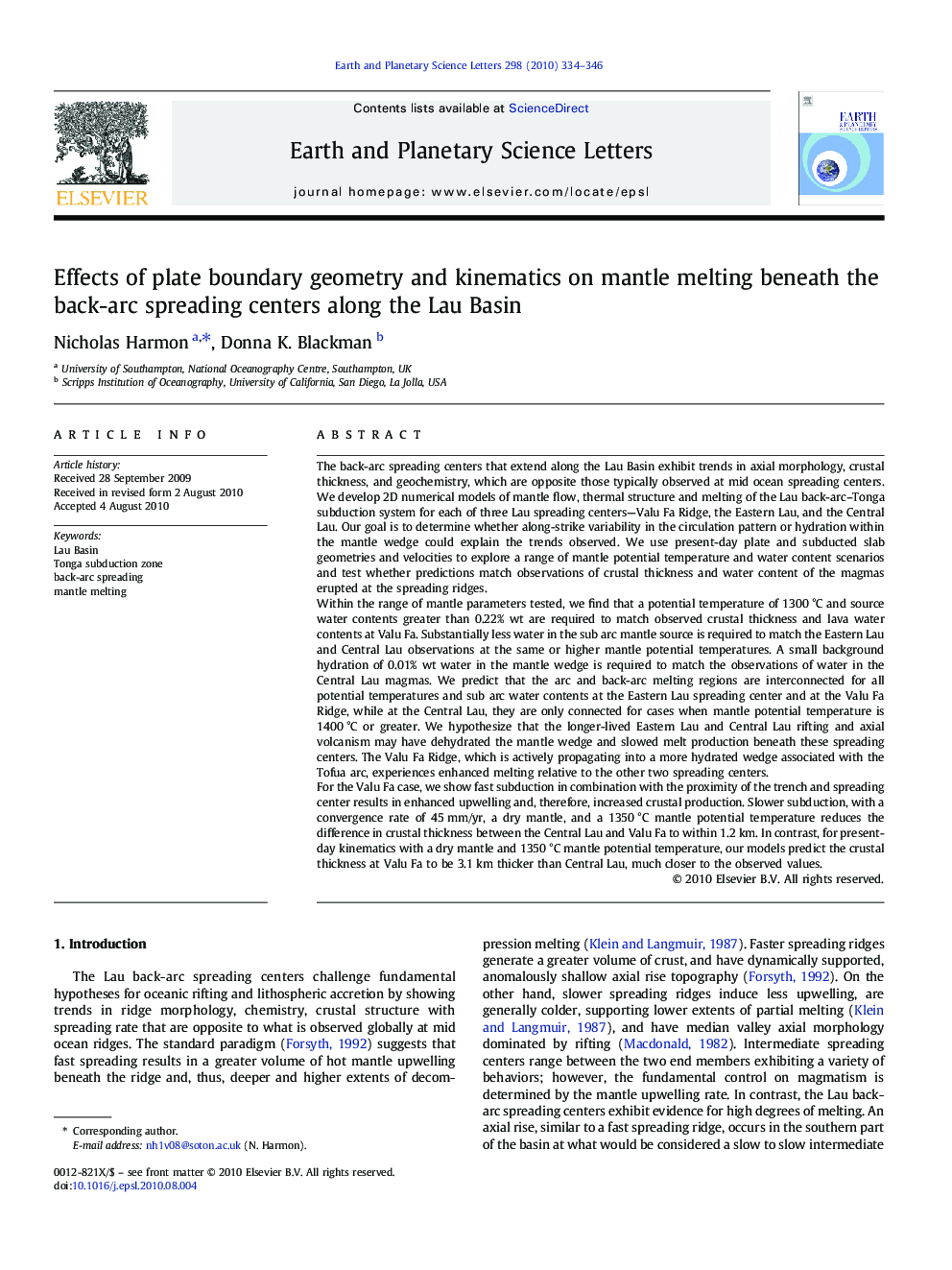| کد مقاله | کد نشریه | سال انتشار | مقاله انگلیسی | نسخه تمام متن |
|---|---|---|---|---|
| 4678410 | 1634843 | 2010 | 13 صفحه PDF | دانلود رایگان |

The back-arc spreading centers that extend along the Lau Basin exhibit trends in axial morphology, crustal thickness, and geochemistry, which are opposite those typically observed at mid ocean spreading centers. We develop 2D numerical models of mantle flow, thermal structure and melting of the Lau back-arc–Tonga subduction system for each of three Lau spreading centers—Valu Fa Ridge, the Eastern Lau, and the Central Lau. Our goal is to determine whether along-strike variability in the circulation pattern or hydration within the mantle wedge could explain the trends observed. We use present-day plate and subducted slab geometries and velocities to explore a range of mantle potential temperature and water content scenarios and test whether predictions match observations of crustal thickness and water content of the magmas erupted at the spreading ridges.Within the range of mantle parameters tested, we find that a potential temperature of 1300 °C and source water contents greater than 0.22% wt are required to match observed crustal thickness and lava water contents at Valu Fa. Substantially less water in the sub arc mantle source is required to match the Eastern Lau and Central Lau observations at the same or higher mantle potential temperatures. A small background hydration of 0.01% wt water in the mantle wedge is required to match the observations of water in the Central Lau magmas. We predict that the arc and back-arc melting regions are interconnected for all potential temperatures and sub arc water contents at the Eastern Lau spreading center and at the Valu Fa Ridge, while at the Central Lau, they are only connected for cases when mantle potential temperature is 1400 °C or greater. We hypothesize that the longer-lived Eastern Lau and Central Lau rifting and axial volcanism may have dehydrated the mantle wedge and slowed melt production beneath these spreading centers. The Valu Fa Ridge, which is actively propagating into a more hydrated wedge associated with the Tofua arc, experiences enhanced melting relative to the other two spreading centers.For the Valu Fa case, we show fast subduction in combination with the proximity of the trench and spreading center results in enhanced upwelling and, therefore, increased crustal production. Slower subduction, with a convergence rate of 45 mm/yr, a dry mantle, and a 1350 °C mantle potential temperature reduces the difference in crustal thickness between the Central Lau and Valu Fa to within 1.2 km. In contrast, for present-day kinematics with a dry mantle and 1350 °C mantle potential temperature, our models predict the crustal thickness at Valu Fa to be 3.1 km thicker than Central Lau, much closer to the observed values.
Journal: Earth and Planetary Science Letters - Volume 298, Issues 3–4, 1 October 2010, Pages 334–346